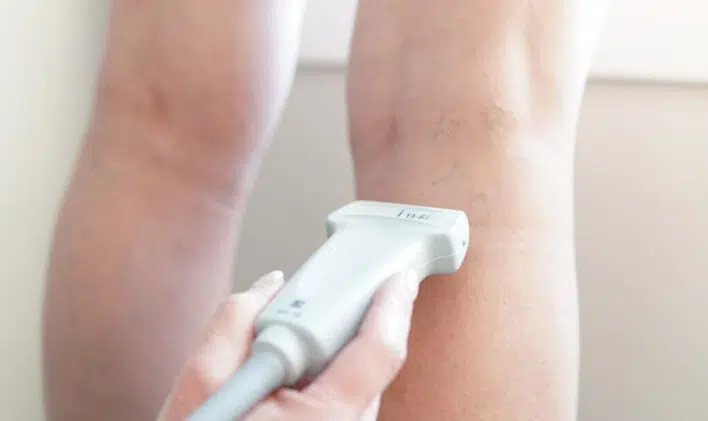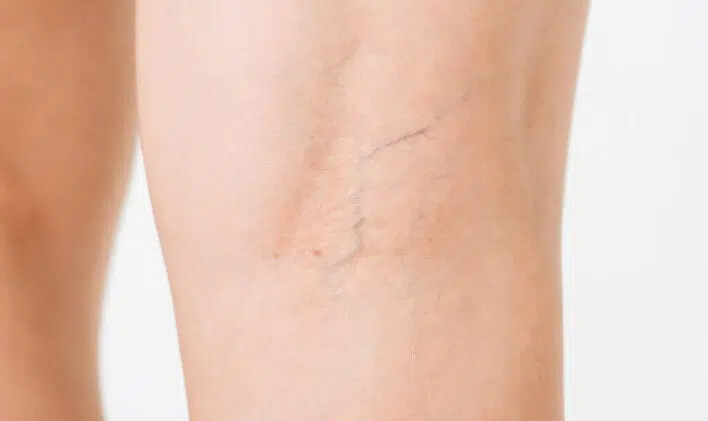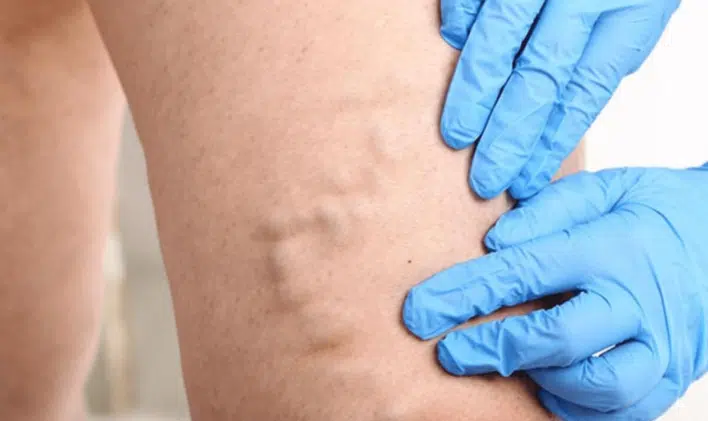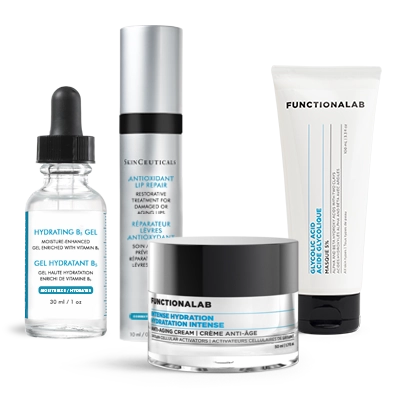Available in your clinic
Not available in your clinic
Face treatments
Body treatments
Varicose veins are veins that look bluish, dilated and are visible under the skin. In 95% of cases, they are located in the superficial venous network, drained by saphenous veins that originate at the foot; this is why varicose veins are most often formed on the legs.
Varicose veins, also called varicosities, that are finer and appear as small filaments are called telangiectasia or spider veins.
Varicose veins can cause pain, heaviness or heat, as well as itching, cramping or swelling. If left untreated, varicose veins can cause more serious complications, such as phlebitis and skin ulceration. Varicose veins also increase the chances of developing a deep venous clot which can significantly impact your health.
The main cause of varicose veins is venous insufficiency, which results from a malfunction of the venous system, which then reduces the ability to transport blood to the heart. Due to gravity, the blood of the lower limbs stagnates and accumulates in the veins so that they expand permanently. Varicose veins, the physical and visible manifestations
of this phenomenon, then appear.
Other factors may also come into play, such as :
Which results in a loss of elasticity and tone affecting blood circulation, as well as a weakening of the valves, the small membranes on the surface of the vein wall that force the blood to flow towards the heart.
Since the muscles of the feet and legs work in conjunction with the veins to move blood towards the upper body.
Standing up for long periods of time, which does not promote circulation.
Since the growing uterus compresses the veins responsible for venous return.
Exercise regularly, prioritizing activities that involve leg muscles: walking, swimming and cycling.
Eat a healthy diet, avoiding salty foods that can cause water retention and affect blood circulation.
Maintain a healthy weight, since excess weight increases the pressure on the leg veins.
Avoid sitting or standing for too long.
Avoid wearing tight clothing on the legs and minimize the use of high heels.
Avoid excessively hot or prolonged baths or saunas, as heat activates the dilation of veins that can affect blood circulation.
Wear compression stockings, also known as support stockings or compression socks, which exert pressure on the legs and help the veins to bring the blood back to the heart.

This safe treatment, which does not require any convalescence, consists of injecting a sclerosing agent into the problematic vein using a fine needle. This procedure damages the vein walls causing the vein to close, forcing the blood to take a new path to the heart. The sclerosed veins then gradually disappear.
More than one treatment may be necessary to eliminate varicose veins and maintenance sessions are recommended to prevent the appearance of new ones.

Endovenous laser treatment has virtually replaced painful phlebectomy or surgical stripping by reducing the associated complications, risks and convalescence. During laser treatment, an intravenous catheter inserted at the very bottom of the leg reaches the problematic vein. A laser fibre is then introduced into this catheter and pushed along the vein until the tip of the fibre reaches the top of the targeted vein. A local anaesthetic is finally applied and the laser is activated. For a few minutes, the energy deployed destroys the walls of the affected vein and the blood then absorbs the destroyed tissues.
No downtime : daily activities can resume immediately after treatment!

VenaSealTM treatment involves applying a tiny amount of medical glue into the problematic vein using a small catheter. Once the vein is closed, the blood is immediately redirected to the other healthy veins in the leg.
No form of anaesthesia or nerve blockage is required, no pre- or post-treatment medication is prescribed and there is no need to wear compression stockings afterwards.

Shop our products for an enhanced beauty routine!